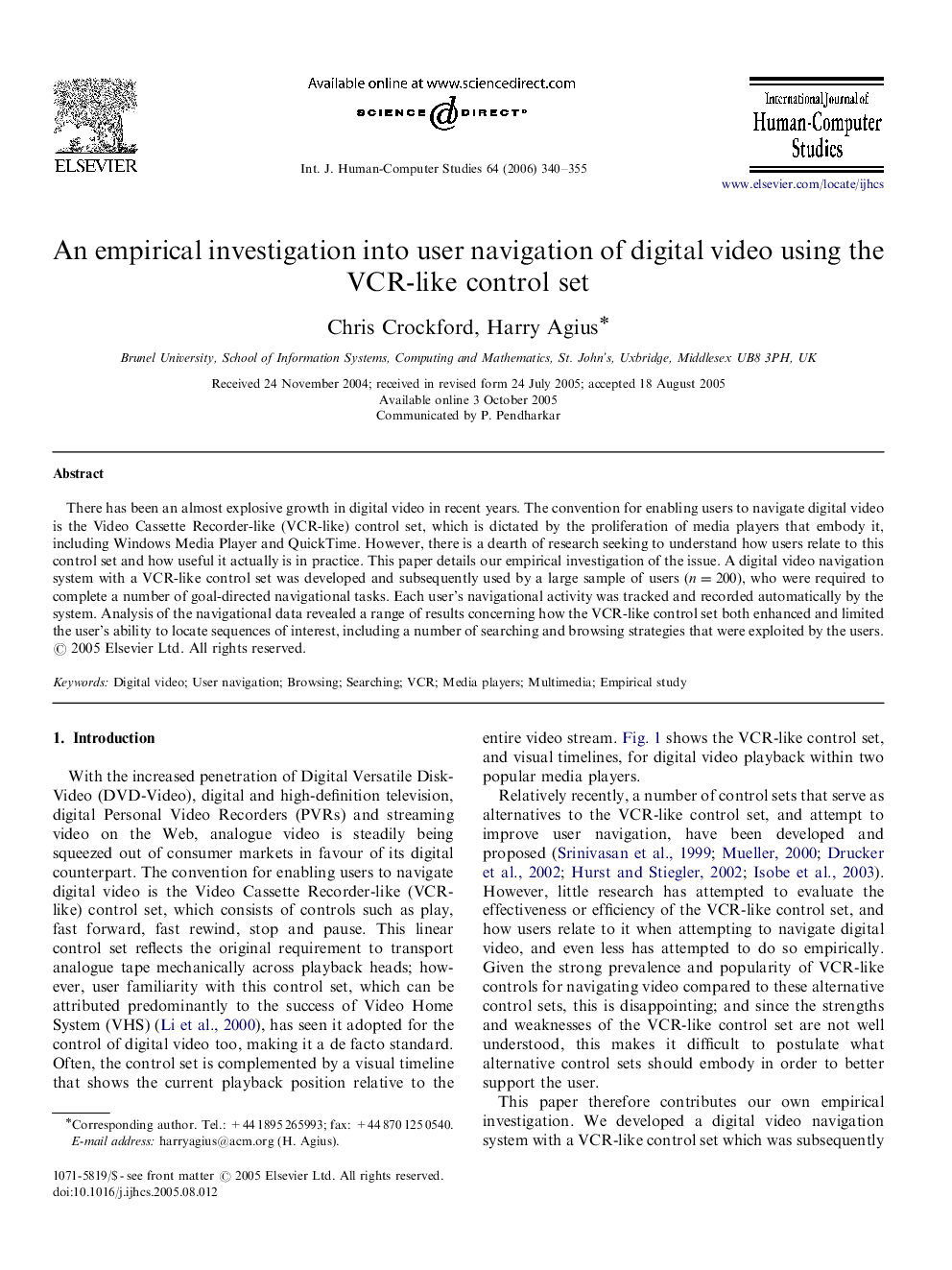| Article ID | Journal | Published Year | Pages | File Type |
|---|---|---|---|---|
| 401060 | International Journal of Human-Computer Studies | 2006 | 16 Pages |
There has been an almost explosive growth in digital video in recent years. The convention for enabling users to navigate digital video is the Video Cassette Recorder-like (VCR-like) control set, which is dictated by the proliferation of media players that embody it, including Windows Media Player and QuickTime. However, there is a dearth of research seeking to understand how users relate to this control set and how useful it actually is in practice. This paper details our empirical investigation of the issue. A digital video navigation system with a VCR-like control set was developed and subsequently used by a large sample of users (n=200n=200), who were required to complete a number of goal-directed navigational tasks. Each user's navigational activity was tracked and recorded automatically by the system. Analysis of the navigational data revealed a range of results concerning how the VCR-like control set both enhanced and limited the user's ability to locate sequences of interest, including a number of searching and browsing strategies that were exploited by the users.
